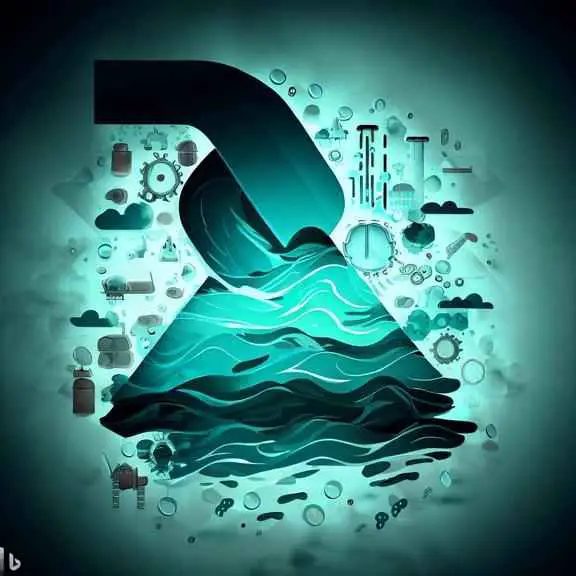Paragraph on
Water
for all Class, Words
by Environment on
Water is an essential element for life and is present on our planet in various forms. It covers roughly 71% of the Earth’s surface, can be…, please continue reading.

Table of Content
Ad
The Paragraph on Water
Ad

Questions about Water
Ad
Water is an essential element for life and is present on our planet in various forms. It covers roughly 71% of the Earth’s surface, can be found in oceans, lakes, rivers, and even underground. Water is critical for agriculture, consumption, and hygiene, making it an invaluable resource for all living organisms.
Although water seems abundant, the available freshwater resources are limited and threatened by increasing demand, pollution, and climate change. As the global population grows, the pressure on freshwater resources intensifies, leading to scarcity in some regions. Water pollution is another significant challenge, with industrial and agricultural runoff contaminating rivers and lakes, affecting aquatic ecosystems, and compromising human health.
Conserving water and promoting sustainable water use practices are crucial for protecting this vital resource from depletion and contamination. Individuals can take simple actions such as reducing consumption, fixing leaks, and using water-efficient appliances like low-flow showers and toilets. Governments can work on preserving natural water sources, promoting wastewater recycling, and enforcing regulations to reduce pollution.
In conclusion, water is essential, and it is up to every one of us to conserve and protect it. A sustainable water future is essential for a healthy planet, and the well-being of future generations depends on our actions today.
- What percentage of the Earth’s surface does water cover?
- Water covers roughly 71% of the Earth’s surface.
- What are some of the forms in which water exists on Earth?
- Water exists on Earth in oceans, lakes, rivers, and underground.
- What is the significance of water for living organisms?
- Water is critical for agriculture, consumption, and hygiene, making it an invaluable resource for all living organisms.
- What are some of the challenges threatening freshwater resources?
- Freshwater resources are threatened by increasing demand, pollution, and climate change.
- What is the impact of pollution on aquatic ecosystems?
- Pollution affects aquatic ecosystems, compromising human health, and contaminating rivers and lakes.
- How can individuals promote sustainable water use practices?
- Individuals can reduce consumption, fix leaks, and use water-efficient appliances.
- What can governments do to preserve water sources and reduce pollution?
- Governments can work on preserving natural water sources, promoting wastewater recycling, and enforcing regulations to reduce pollution.
- Why is a sustainable water future essential for a healthy planet?
- A sustainable water future is essential for a healthy planet because it has a direct impact on the well-being of future generations.
- What is the impact of the global population on freshwater resources?
- As the global population grows, the pressure on freshwater resources intensifies, leading to scarcity in some regions.
- Why is water an invaluable resource?
- Water is an invaluable resource because it is essential for life, and without it, living organisms cannot survive.

Vocabulary related to Water
Ad
Vocabulary Words:
- Conservation - the act of protecting and preserving natural resources
Usage: The conservation of water is crucial for our planet’s future. Synonyms: Preservation, protection, safeguarding Antonyms: Waste, destruction, dissipation
- Depletion - the reduction of a natural resource
Usage: The depletion of freshwater resources is a significant concern for many countries. Synonyms: Reduction, reductionism, decline Antonyms: Abundance, restoration, replenishment
- Contamination - the presence of harmful substances in the environment
Usage: Water contamination can lead to adverse health effects. Synonyms: Pollution, adulteration, infection Antonyms: Purification, cleansing, sterilization
- Scarcity - the state of being in short supply or insufficient amount
Usage: Water scarcity is a common issue in many parts of the world. Synonyms: Shortage, paucity, insufficiency Antonyms: Abundance, plenty, sufficiency
- Sustainable - able to be maintained at a certain rate or level without exhausting natural resources
Usage: A sustainable water future is essential for the well-being of future generations. Synonyms: Renewable, eco-friendly, green Antonyms: Unsustainable, nonrenewable, harmful
- Ecosystem - a community of living organisms and their environment
Usage: Pollution can have devastating effects on aquatic ecosystems. Synonyms: Habitat, biosphere, environment Antonyms: Disruptive, deteriorating, unhealthy
- Consumption - the using up of goods or services
Usage: Water consumption needs to be monitored to conserve this vital resource. Synonyms: Utilization, expenditure, depletion Antonyms: Conservation, preservation, restraint
- Wastewater - water that has been used and is no longer clean
Usage: Wastewater can be recycled for various purposes. Synonyms: Sewage, effluent, graywater Antonyms: Clean water, potable water, fresh water
- Contaminants - substances that make something impure or unusable
Usage: Industrial runoff can contain various contaminants that pollute water sources. Synonyms: Pollutants, impurities, toxins Antonyms: Purity, cleanliness, wholesomeness
- Aquatic - relating to water or living in water
Usage: An aquatic ecosystem includes all living organisms that rely on water for survival. Synonyms: Marine, waterborne, fluvial Antonyms: Terrestrial, dry land, nonaquatic

Structure of the sample "Water" paragraph
Ad
Cohesion and Coherence:
The paragraph on water starts with the definition and importance of water and follows through to a description of various challenges that threaten water resources. The paragraph maintains a clear structure and sense of order, with each sentence building upon the ideas of the last. Additionally, various transition words such as “although” and “in conclusion” are used to improve the coherence and ensure that the paragraph flows smoothly. Finally, the paragraph ends with a call to action that connects back to the introduction, reinforcing the central theme of the importance of water conservation.
